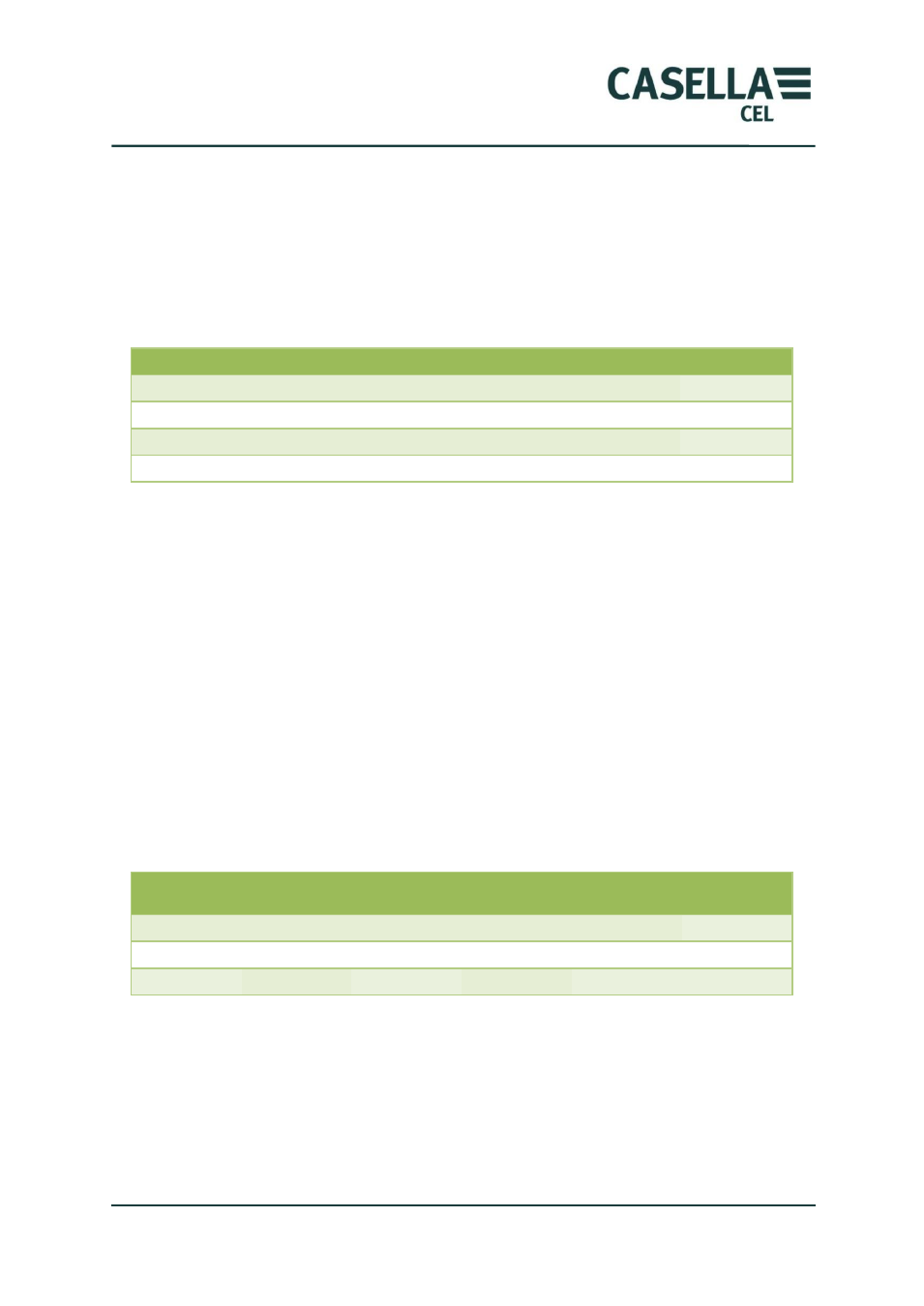Cel-63x environmental & occupational noise meter – Casella CEL CEL-63X User Manual
Page 76

CEL-63x Environmental & Occupational Noise Meter
76
Casella CEL
5. Linear operating range
Table 4 shows the lower and upper limits of the linear operating ranges for
electrical input or when using a CEL-251 microphone.
You should add 10 dB to the lower limit shown in this table when using a
CEL-252 microphone.
Table 4.
Linear operating range
Weighting
31.5 Hz
1 kHz
4 kHz
8 kHz
12.5 kHz
A
30 to 100
30 to 140
30 to 141
30 to 138
30 to 134
C
32 to 137
32 to 140
32 to139
32 to 136
32 to 132
Z
38 to 140
38 to 140
38 to 140
38 to 140
38 to 140
C Peak
65 to 140
65 to 143
65 to 142
65 to 139
65 to 135
6. Linearity measurements starting point
The starting point for measuring linearity errors is 114 dB.
7. Electrical input
The input device to apply electrical signals to the pre-amplifier is a series
18 pF ±5 % capacitor. You can use the CEL-516-2 line input adaptor for this
purpose. The electrical self-generated noise can be measured with the supplied
shorting plug attached to the CEL-516-2.
8. Self-generated noise
Self-generated noise is a combination of microphone thermal noise and the
instrument‟s electrical noise. Table 5 shows the self-generated noise levels for a
range of conditions.
Table 5.
Self-generated noise using a type CEL-251 microphone
Weighting
Electrical
Typical dB
Electrical
Max dB
Microphone
Thermal dB
Combined
Typical dB
Combined
Max dB
A
15.0
17.5
16.0
18.5
20.0
C
18.0
21.0
16.8
20.6
23.0
Z
24.0
26.5
16.8
25.0
27.0
Note that the CEL-252 microphone has a typical thermal noise level of
20 dB(A). When using the CEL-252 microphone, the combined typical and
maximum noise levels will be 3 dB to 4 dB higher than the values shown in the
table above.